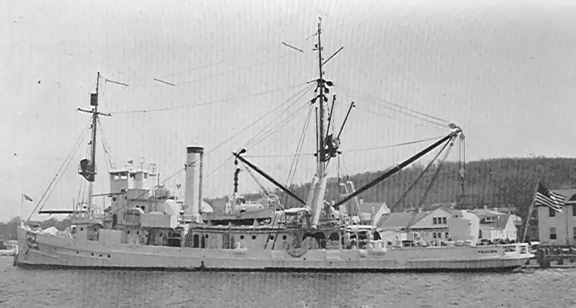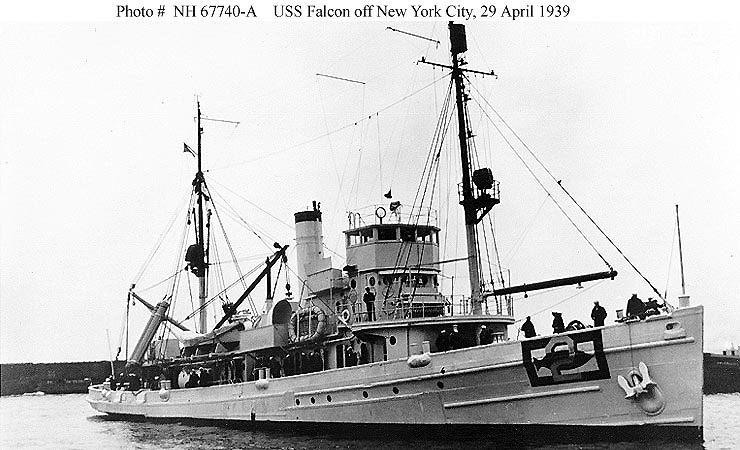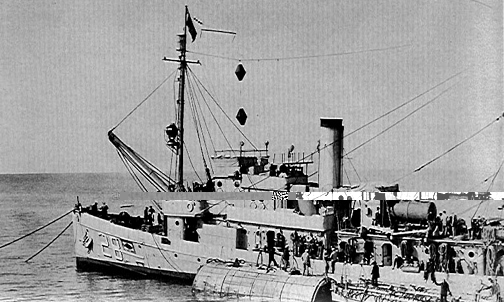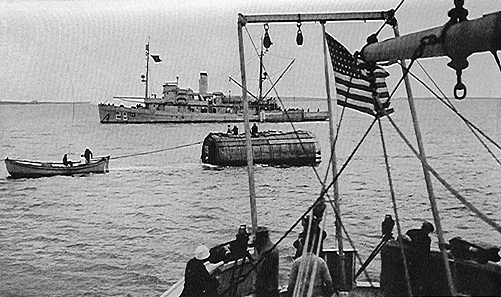United States Navy |
|||||||||||||||||||||||||||||
Submarine Tenders |
|||||||||||||||||||||||||||||
USS Falcon |
|||||||||||||||||||||||||||||

|
|||||||||||||||||||||||||||||
| USS Falcon | |||||||||||||||||||||||||||||
|
|||||||||||||||||||||||||||||
| The third Falcon (No. 28) was launched 7 September 1918 by Gas Engine and Power Co., and C. L. Seabury Co., Morris Heights, N.Y.; sponsored by Mrs. W. J. Parslow; and commissioned 12 November 1918, Lieutenant B. E. Rigg in command. She was reclassified ASR-2 on 22 January 1936. From December 1918 to May 1919, Falcon served on temporary duty in the 4th Naval District as a lightship. After towing targets and various craft along the east coast, an occupation with salvage duty which was to be her major employment for many years, she sailed from New York 8 August 1919 for Kirkwall, Orkney Islands, Scotland. For 2 months she aided in clearing the North Sea of the vast number of mines laid there in World War I, returning to Charleston, S.C., 28 November 1919. Falcon made a second voyage to European waters between March and August 1920, visiting Rosyth, Scotland, and Brest, France, and returning by way of the Azores with a captured German submarine in tow for the Canal Zone. Back at Hampton Roads 18 October 1920, she returned to towing, salvage, and transport duty along the east coast. After conducting salvage operations on S-5 (SS-110) through the summer of 1921, she was assigned permanently to submarine salvage work, based at New London. She continued to perform occasional towing duty, and from time to time sailed to the Caribbean on both salvage and towing duty.
Acting as tender as well as salvage ship for submarines, Falcon accompanied them to fleet exercises in waters from Maine to the Canal Zone, and conducted many operations to develop rescue techniques, as well as training divers. She stood by during deep submergence runs and other tests of new submarines, and played an important role in raising Squalus (SS-192) in the summer of 1939, and in the rescue operations on O-9 (SS-70) in June 1940. Throughout World War II, aging but still able, Falcon sailed out of New London and Portsmouth N.H., on salvage, towing, and experimental operations.
History from the Dictionary of American Fighting Ships. |
|||||||||||||||||||||||||||||
 |
|||||||||||||||||||||||||||||
| Table of Ships | |||||||||||||||||||||||||||||
| Go to TenderTale Main Page | |||||||||||||||||||||||||||||
| © 1997, 2006 & 2011 Common Cents Computers |

